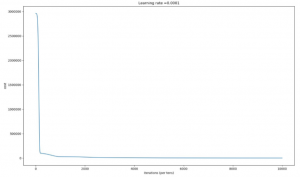Artificial Intelligence and Machine Learning applications is one of the most hottest topics in the industry today. Robots, self driving cars, intelligent chatbots and many other innovations are coming to our work and life.
In this post we will look at few machine learning less known applications that were covered in some of previous posts. We will see how machine learning impact our work and life and how we can benefit from this.
Artificial Intelligence – Neural Networks Applications in Seismic Prospecting

Machine learning allows to automate different processes that we use in the work environment. Even if the process is complex like seismic velocity analysis, which usually take days to be done manually. Neural Networks and Deep Learning can be used for speeding up the process and save days of manually picking the peaks.
For more details refer to Neural Networks Applications in Seismic Prospecting post with the example of Multi Layer perceptron.
As result of this saving workers can use their time for more interesting tasks. Thus due to AI and ML the jobs will become more interesting and creative but will require more skills for people.
Correlation Data Analysis Between Food and Mood

In the post Machine Learning for Correlation Data Analysis Between Food and Mood machine learning was applied to estimate correlation between eating sweet food and mood state. The moderate correlation (0.4) was detected. Also it was detected some delay (5-6 days) between food intake and change of mood. This corresponds with observation that swing mood may appear in several days, not on the same or next day after eating sweet food.
How we can benefit from this – by controlling food we can control our mood at some degree. One thing is just know that this is bad food that need to be avoided or minimized, another thing to know some numbers – in how many days it will be affected, how strong is the impact? The latest leads to more motivation take actions on food. This helps avoid excuses like “yes, I know it is a bad thing, but may be small quantity is not counted”.
Inferring Causes and Effects from Daily Data

In the post Inferring Causes and Effects from Daily Data we applied machine learning techniques for learning relationsip bettween data. Here our interest is the date from our actions.
Doing different activities we might be interesting how they impact each other. For example, if we visit different links on Internet, we might want to know how this action impacts our motivation for doing some specific things. In other words we are interesting in inferring importance of causes for effects from our daily activities data.
In this post we will look at few ways to detect relationships between actions and results using machine learning algorithms and python. We create python code to use two machine learning algorithms helped us to estimate the importance of our features (or actions) for our Y variable.
With more data getting collected and available, we will be using more machine learning for making better actions.
Topic modeling

We use topic modeling for discovering topics that occur in a set of documents. Topic modeling applications help us organize collection of text documents (posts, search results, articles), provide quick overview of contents and useful insights. Machine learning has different methods and modules to solve this task. For example, textacy module has a lot of functionality for processing data after applying NLP. This is why python textacy module looks very promising.
And this is also why in the post Topic Modeling Python and Textacy textacy was used for topic modeling. And it showed that it is very easy to do than with other module, for example gensim. This is the trend that we can see – as new module come out we can do more with less.
Conclusion
The above 4 examples of machine learning applications confirm that in the coming years more processes will be automated, some manual labor tasks will be changed to more creative and interesting processes and we will be getting more insights for actions and decisions from our data.
References
1. Topic modeling